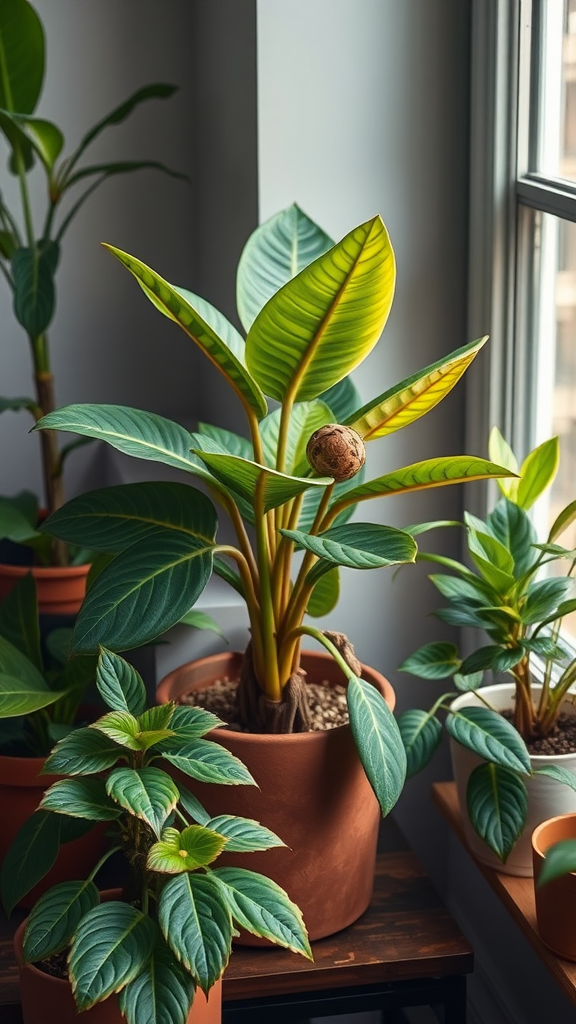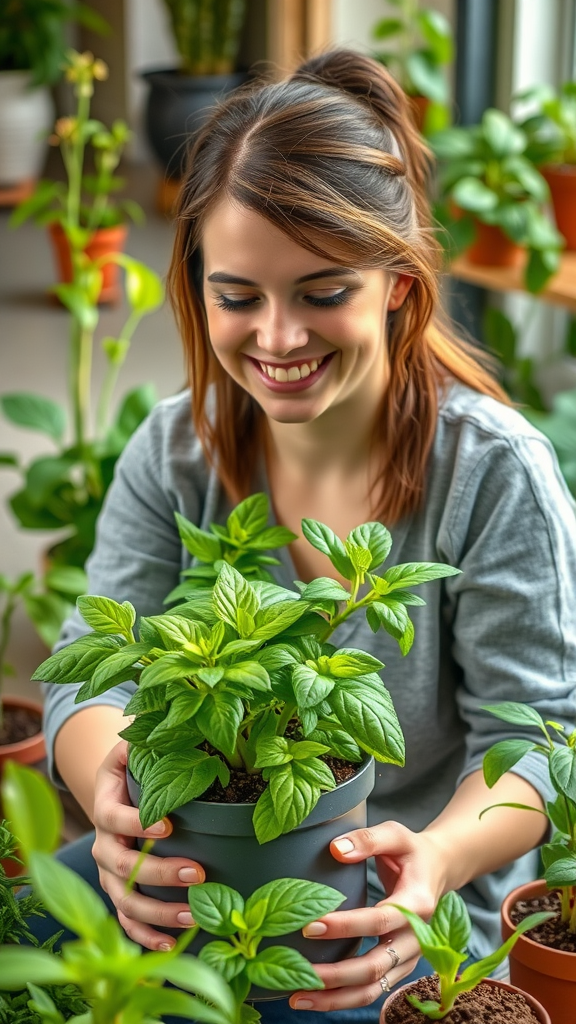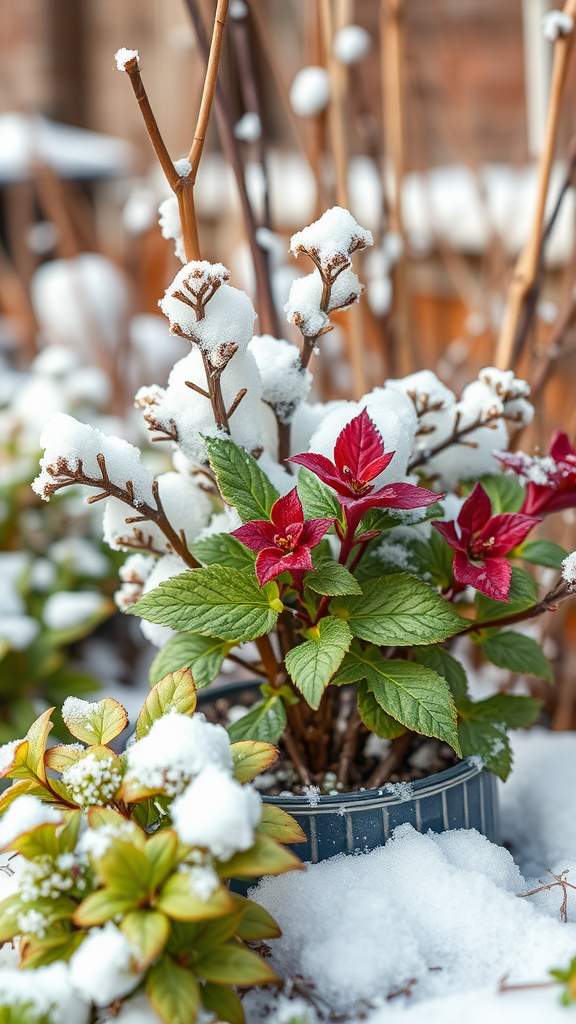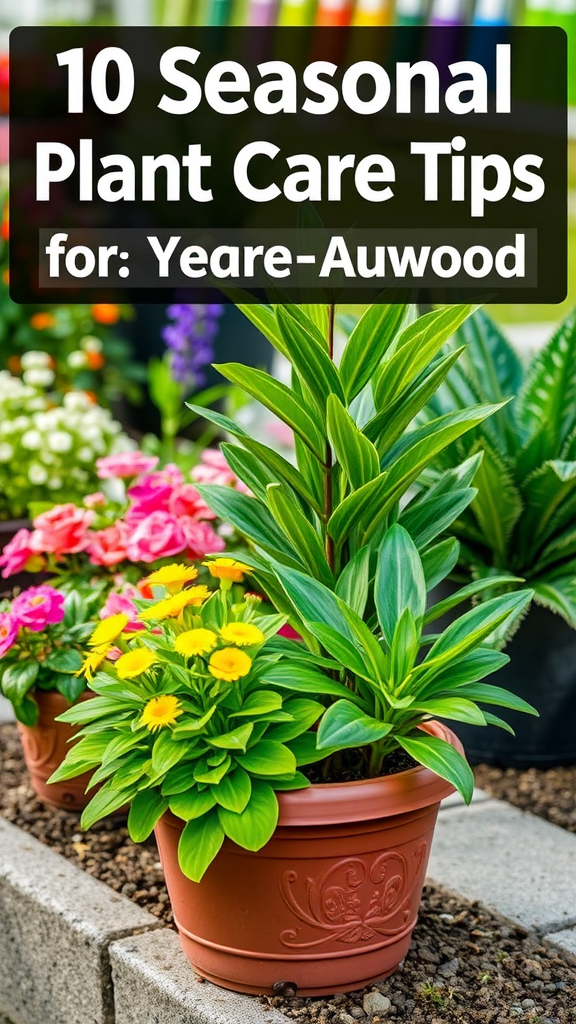Exploring 10 Rare Houseplants Every Collector Needs
If you are a passionate plant lover and an enthusiastic collector, adding rare houseplants to your collection can ignite your green thumb. These unique plants not only bring a splash of beauty to your home but also create a conversation starter for guests. Here are ten rare houseplants that every collector should consider adding to their collection.
1. Monstera Albo Variegata
This stunning plant features large, heart-shaped leaves with striking white and green variegation. The Monstera Albo is known for its dramatic appearance and rarity, making it a prized possession among plant collectors. It thrives in bright, indirect light and requires well-draining soil to flourish.
2. Adenia Digitata
Also known as the elephant foot plant, Adenia Digitata has a unique caudex that resembles an elephant’s foot. Its thick trunk stores water, making it drought-resistant. This plant loves bright light but can tolerate some shade, making it perfect for indoor settings.
3. Hoya Kerrii
The Hoya Kerrii, often called the sweetheart plant, features thick, waxy, heart-shaped leaves. This succulent is not only stunning but also incredibly easy to care for. Its slow growth and charming appearance make it a favorite, especially when given as gifts on special occasions.
4. Philodendron Gloriosum
The Philodendron Gloriosum showcases broad, velvety green leaves with striking pale veins. This climbing plant thrives when it has a moss pole to cling to. It prefers humid environments and bright, indirect sunlight, making it an excellent choice for bathrooms or kitchens.
5. Ficus Carica “Petite Negra”
The Petite Negra fig tree is compact and perfect for indoor gardening. Its deep green, lobed leaves show off dark purple fruits, creating a beautiful yet functional addition to your home. With the right conditions, you can enjoy fresh figs right from your indoor plant.
6. Calathea Orbifolia
This vibrant plant has large, round leaves with stunning silver stripes that resemble a natural artwork. Calathea Orbifolia thrives in humidity and indirect light. As a stunning addition to your indoor space, it also helps purify the air, making it a healthy choice.
7. Variegated String of Hearts
This trailing vine is adored for its heart-shaped leaves adorned with creamy white and green variegation. The Variegated String of Hearts can grow long and lush, making it a delightful choice for hanging planters. It enjoys bright, indirect light and minimal water, making it easy to care for.
8. Raphidophora Tetrasperma
Often confused with Monstera, Raphidophora Tetrasperma holds its own charm with split leaves that create a unique look. This fast-growing plant can elevate any space and thrives in bright indirect sunlight. It also requires moisture, so be mindful not to let the soil dry out completely.
9. Alocasia Azlanii
With dark green leaves and prominent red veins, Alocasia Azlanii stands out among houseplants. This tropical beauty thrives in bright light and humidity. It’s essential to keep the soil slightly moist for optimal growth, making it an exciting challenge for knowledgeable plant lovers.
10. Rhaphidophora Cryptantha
This rare houseplant boasts textured leaves that resemble snakeskin, making it a sought-after item for collectors. Rhaphidophora Cryptantha thrives in low to bright indirect light conditions. It enjoys higher humidity levels, so consider misting occasionally to keep this unique beauty thriving.
Collecting rare houseplants can be an exciting journey, allowing you to discover new species and expand your knowledge about plant care. Each of these ten plants offers something unique, whether it’s breathtaking foliage or interesting shapes. Embrace the world of rare houseplants and let your collection flourish!
Tips for Caring for Rare Houseplants in Your Collection
Caring for rare houseplants is both an art and a science. Each plant species has unique requirements, and understanding these can make all the difference in their health and growth. Whether you’re a seasoned collector or just beginning, these tips will help you nurture your rare plants effectively.
Understanding Light Requirements
Light is a crucial factor in the health of your rare houseplants. Here’s what to consider:
- Direct sunlight: Some rare plants love bright, direct sunlight. These include species like the Hoya Krimson Queen, which thrives in well-lit areas.
- Indirect sunlight: Many rare varieties prefer bright, indirect light, such as Philodendron Pink Princess. Placing them near a window that’s filtered by sheer curtains is ideal.
- Low-light conditions: A few species can thrive in low-light environments. Examples are the Snake Plant and ZZ plant, perfect for dimly lit spaces.
Watering Wisely
Watering might seem simple, but it’s tricky when caring for rare plants. Here are some strategies:
- Check soil moisture: Instead of sticking to a schedule, check the top inch of the soil. If it’s dry, it’s time to water.
- Use room temperature water: Cold water can shock the roots. Always use water that is at room temperature.
- Water less in winter: Many plants go dormant in colder months, requiring less water. Adjust your routine accordingly.
Humidity Levels Matter
Most rare plants thrive in high humidity. Here are ways to boost humidity:
- Group plants together: Placing your rare houseplants close to each other creates a microclimate with increased humidity.
- Use a humidifier: If you’re in a dry climate, a humidifier can provide consistent moisture in the air.
- Tray method: Fill a tray with water and pebbles, then place your plant pots on top of the pebbles, ensuring the pots don’t sit directly in the water.
Fertilizing Your Rare Plants
Fertilizing is essential for growth, but over-fertilizing can harm your plants. Consider these points:
- Use a balanced fertilizer: Look for formulas made for houseplants, keeping the ratio of nitrogen, phosphorus, and potassium equal.
- Frequency: Fertilize during the growing season, typically spring and summer, but reduce this in fall and winter when growth slows.
- Observe your plant: Adjust your fertilizing routine based on how your plant responds. Yellowing leaves may indicate over-fertilization.
Pest Management
Rare plants are susceptible to pests, so regular checks are essential. Here’s how to manage pests effectively:
- Inspect regularly: Look for signs of pests, such as webbing or sticky residue on leaves.
- Neem oil: A natural solution to eliminate pests without harming your plants. Spray on affected areas as soon as you spot an issue.
- Isolation: If a plant shows a severe infestation, isolate it from the rest of your collection to prevent spreading.
Repotting Carefully
As rare houseplants grow, they often need larger pots. Here’s how to repot with care:
- Choose the right time: The best time to repot is during the spring when plants are actively growing.
- Use fresh, suitable soil: Select soil that matches your plant’s needs, like aroid mixes for tropical plants.
- Gentle handling: Be careful when removing the plant from its pot to avoid damaging the roots.
By implementing these strategies, your rare houseplants can thrive and become a stunning part of your collection. Happy planting!
Conclusion
Building a collection of rare houseplants can be a rewarding and fulfilling journey. The ten unique plants we’ve explored offer not just beauty but also a sense of accomplishment for any plant enthusiast. Each of these rare varieties, from the stunning Monstera obliqua to the captivating variegated string of hearts, brings its own flair to your indoor garden. As you venture into this exciting world of plant collection, remember that their care is just as important as their aesthetics.
Caring for rare houseplants requires attention and knowledge. By understanding their specific needs regarding light, water, temperature, and humidity, you can create the ideal environment for these exquisite specimens. Regular monitoring for pests and diseases is crucial to ensuring their health and longevity. Adjust your care routine as needed, and don’t hesitate to experiment to find what works best for each plant.
As you cultivate your collection, share your experiences, seek advice from fellow enthusiasts, and continually educate yourself on best practices. Collecting rare houseplants is not just about possession; it’s about nurturing, learning, and creating a vibrant space that reflects your personality. With patience and diligence, you’ll not only enjoy the unique beauty of these plants but also deepen your understanding of the botanical world. So dive in, embrace the growing adventure, and let your passion for plants flourish as you care for these extraordinary treasures in your home.





